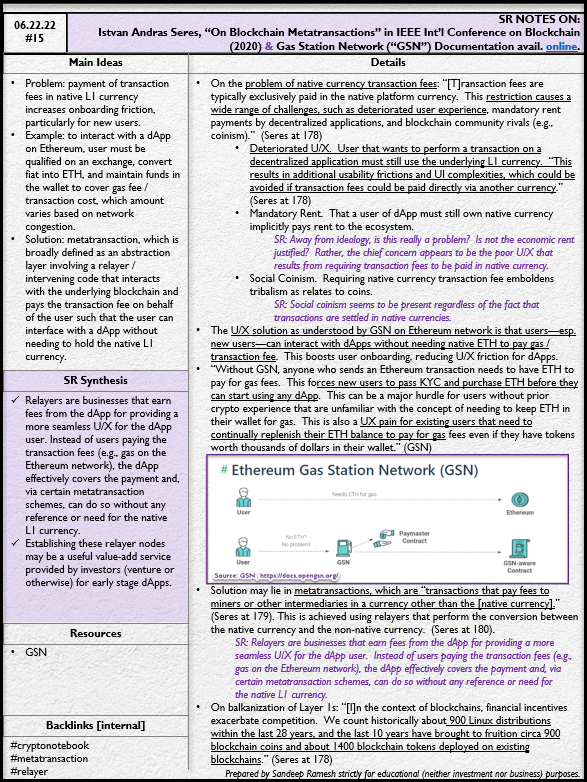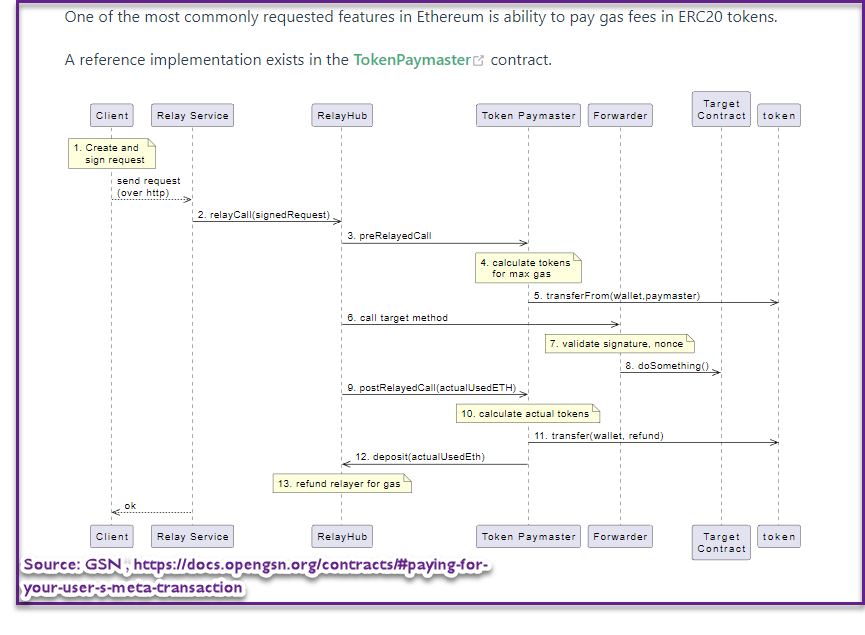Source: Istvan Andras Seres, “On Blockchain Metatransactions” in IEEE Int’l Conference on Blockchain (2020) & Gas Station Network (“GSN”) Documentation avail. online.
- Problem: payment of transaction fees in native L1 currency increases onboarding friction, particularly for new users.
- Example: to interact with a dApp on Ethereum, user must be qualified on an exchange, convert fiat into ETH, and maintain funds in the wallet to cover gas fee / transaction cost, which amount varies based on network congestion.
- Solution: metatransaction, which is broadly defined as an abstraction layer involving a relayer / intervening code that interacts with the underlying blockchain and pays the transaction fee on behalf of the user such that the user can interface with a dApp without needing to hold the native L1 currency.
- Relayers are businesses that earn fees from the dApp for providing a more seamless U/X for the dApp user. Instead of users paying the transaction fees (e.g., gas on the Ethereum network), the dApp effectively covers the payment and, via certain metatransaction schemes, can do so without any reference or need for the native L1 currency.
- Establishing these relayer nodes may be a useful value-add service provided by investors (venture or otherwise) for early stage dApps.

